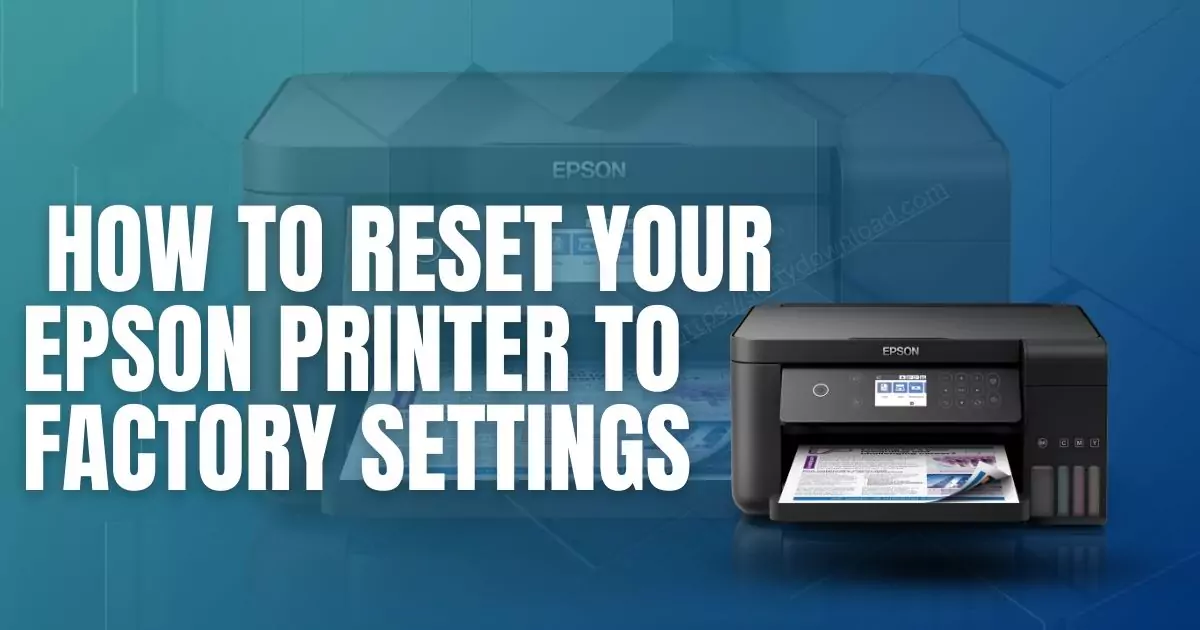Let’s face it: printers are fussy. Sometimes, all you want is for the machine to just print the thing—and instead, it throws error codes, prints crooked lines, won’t connect to Wi-Fi, or stubbornly refuses to acknowledge your computer exists. And after trying every fix you can find, you might find yourself thinking: “Can I just… reset the whole thing?” Short answer? Yes. This article walks you through how to reset your Epson printer to factory settings—what it means, when it helps, and how to do it safely.
🧠 What Does a Factory Reset Actually Do?
Resetting your Epson printer to factory settings is basically like giving it a clean slate. It erases everything that’s been changed or customized since it left the factory.
That includes:
- Wi-Fi network settings
- Custom paper sizes or tray preferences
- Ink level tracking (in some models)
- Paired devices (like your PC or phone)
- Admin passwords or PIN codes
What it doesn’t do:
- It won’t uninstall firmware updates
- It won’t magically refill your ink
- It won’t clean printheads or fix hardware issues
Still, it’s one of the most effective ways to resolve weird, persistent problems that just won’t go away otherwise.
🛠 When Should You Reset Your Epson Printer?
You don’t need to factory reset for every little glitch. But here are some good reasons to consider it:
✅ You’ve changed Wi-Fi networks and the printer won’t reconnect
✅ The printer isn’t pairing with your devices anymore
✅ You’re giving away or selling the printer
✅ You’ve forgotten the admin password
✅ You’ve tried everything and nothing’s working
Basically, when the printer starts acting more like a moody teenager than a helpful tool—you reset.
📲 How to Reset Epson Printer to Factory Settings (Step-by-Step)
🔹 Method 1: Reset Using the Printer’s Control Panel (for models with a screen)
- Activate the printer.
- Use the touch panel to access Settings or Setup.
- Select Reset Settings or Restore Settings.
- Choose “Restore Default Settings.”
- Depending on your problem, select All Settings or only Network/Settings.
- When asked, confirm
When the printer restarts, everything will be completely erased and restored to its original state.
🔹 Method 2: Reset Using Hard Button Combination (for screenless models)
In the event that your Epson printer lacks a screen, follow these steps:
- Switch off the printer.
- Turn the printer back on while grasping the reset button, which is often located at the back or bottom.
- Hold down the reset button for another five to ten seconds.
- You’ll hear the printer reset or see the lights flash.
- Wait for the printer to complete rebooting after releasing the button.
While many Epson Eco tank and L-series printers enable this, not all models do.
🔹 Method 3: Use Epson Software on PC
- Install the Epson Printer Utility or Epson Connect Utility by downloading it from the official Epson website.
- Locate your printer model by opening the program.
- Select Maintenance > Restore Default Configuration.
- To reset, adhere to the on-screen directions.
This is ideal for printers that are already networked or USB-connected to your computer.
🤔 After Reset: What Happens Next?
- Reconnecting the printer to Wi-Fi is necessary, if applicable.
- Reinstalling any drivers on your computer may be necessary.
- It will be necessary to reconfigure cloud services like Epson Connect and Google Cloud Print.
- You’ll need to reconfigure any custom settings you use, such as paper trays or print density.
It will feel simpler and cleaner, but you will need to unpack a little, like when you move into a new place.
🔒 Final Note: Factory Reset Doesn’t Void Warranty
Many people worry that a factory reset might somehow harm the printer or void the warranty. Don’t worry—it’s a built-in feature. Just make sure you’re not in the middle of a firmware update or print job when you reset.
👋 Wrapping It Up
Resetting your Epson printer to factory settings isn’t complicated, and you don’t need to be a tech wizard to do it. It’s a handy, underrated trick that can save time, sanity, and maybe even your weekend.
Sometimes, the best fix is just starting fresh.
Also, it won’t solve every issue. If you have physical problems (like a jammed roller or dried ink), a reset won’t help. But for connectivity, config errors, and general weirdness? It works wonders.
📌 Frequently Asked Questions (FAQs)
Q1: What does resetting my Epson printer to factory settings do?
Resetting your Epson printer erases all custom settings, including Wi-Fi configuration, paired devices, and admin passwords. It restores the printer to its original state—just like when it came out of the box.
Q2: Will a factory reset delete my printer drivers or ink levels?
No, factory reset won’t remove drivers from your computer or refill ink. Ink levels might be recalibrated in some models, but physical ink remains unchanged. You may need to reinstall drivers if connectivity is reset.
Q3: How do I reset my Epson printer without a screen?
For screenless Epson models, you can usually reset the printer by holding down the reset button (usually on the back) while turning it on. Hold for 5–10 seconds until the printer restarts.
Q4: Do I need to reset my printer after changing Wi-Fi?
Yes, if your Epson printer is not connecting to a new Wi-Fi network, a factory reset can clear old network settings and allow you to start fresh with new credentials.
Q5: Will resetting the printer fix print quality issues?
Not necessarily. A reset helps with software or network issues. For print quality problems like smudging, streaks, or faded text, try cleaning the printhead or aligning the nozzles instead.




